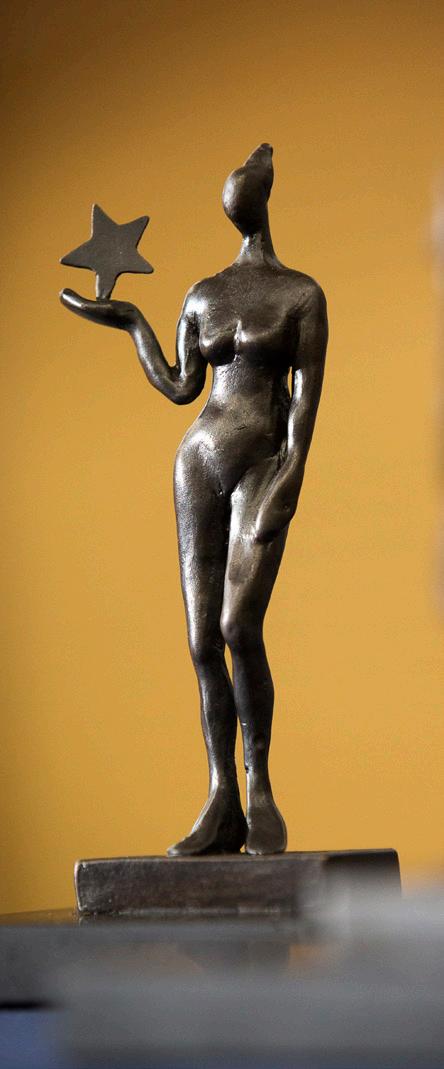
3 minute read
Ready to go!
Finally, after a long time in lockdown and then waiting for the world to return to some sort of travel normality, this year we were ready to add overseas trips back into our school calendar.
The opportunity to learn outside the classroom, in any form, greatly enhances the learning experience for students. But there is something quite special about being able to get on a plane and travel as part of a group to experience an overseas adventure. As well as the learning related to curriculum, other less tangible benefits are gained. Students develop greater independence being away from home, with increased responsibility for spending money, getting laundry done and keeping track of belongings. Students forge strong bonds with both peers and staff as the shared experiences bring them closer together. Developing a greater understanding of other cultures and ways of life enhances internationalmindedness and fosters a sense of our place in the world as well as what we can do to contribute positively to it. For years, one of the regular trips on the Diocesan calendar has been the biennial trip to Hawaii where senior geography and tourism students learn about how the process of tourism development operates. As part of an externally examined standard for Level 3 NCEA and optional paper for the IB course, students must be able to analyse how the elements interact to create such a significant aspect of their economy, how it creates spatial and temporal patterns and impacts people, culture and the environment. In April this year, we were able to get back to our case study environment to see first-hand how tourism development has changed since last visiting pre-COVID in 2019, a record year when 10 million tourists visited Hawaii.
There have been some significant changes to travel in general and a lot of changes in Hawaii as a result of an altered tourism industry. But even the slow customs line and our suitcases being left at Honolulu airport after not making our flight to the Big Island could not dampen anyone’s spirits. Scheduled to go to a luau (celebratory feast with cultural entertainment) that first night, we decided we would all go and buy floral Hawaiian souvenir dresses to wear. A quick trip to the legendary ABC store in Kona-Kailua, and everyone was colourfully dressed for our first evening at a luau overlooking Kamakahonu Bay. It was so much fun that it may even become a trip tradition!
The students experienced many different attractions and activities, learning a lot about Hawaiian history, Hawaii’s impressive volcanic landscape and how tourism has developed and changed over time, including its current changes due to the pandemic.




Needless to say, there were loads of stories to tell on our return to Auckland and adventures to treasure for years to come. ‘Mahalo’ for allowing us to return to overseas trips and share this real-life learning with the students.

The sustainability experience
Prior to the Hawaii trip, we planted 200 kanuka seedlings on a farm at Kawakawa Bay to help offset our carbon emission from the flight. To fully offset, around 1600 trees would need to be planted! We could not do that due to time and money, but felt that 200 was a good start.

The original idea was student-led and came from Aniva Clarke; the other students going on the trip were also keen to support the idea. She asked if there was a way to offset the carbon emissions by planting trees. I had a farm contact and we got sponsorship for them from a local business (The Reinstatement Specialists) and partly from the School. The idea also linked well with the School’s annual plan to become more sustainable.
We also wanted to do a sustainable activity when we were in Hawaii. Several organisations offer tourists the chance to ‘pay it forward’ to give back to the environment while visiting the islands.

At Kualoa Ranch, one of their tours is the Malama Experience. Malama ‘Aina is a Hawaiian phrase that means caring for and honouring the land. After taking many school trips to Hawaii, this was personally my favourite activity as it meant we could all think about the impact we have as tourists, and to do some good. Our Malama experience involved us harvesting kalo (taro). We learnt how important kalo is to the Hawaiian people
“All of us jumped into the kalo ponds – this was super fun, even though squishy and messy! We helped the ranch by spending an hour and a half harvesting the crops. We first pulled half of the crop, before moving on to some weeding and then finally some mud stomping, which was personally my favourite bit. To finish the experience, we rinsed off in a small pond with fish and frogs. Overall, this was an awesome day and made us all understand a little more about Hawaiian culture and their sustainability practices.”
Hattie Miles
for sustenance and also for its links to Hawaiian cultural identity. Everyone happily got into the muddy kalo ponds and began the harvesting. Our guide Piko reported how impressed she was with our teamwork and how quickly and efficiently we harvested half a kalo pond.


Jacinda Andrews










